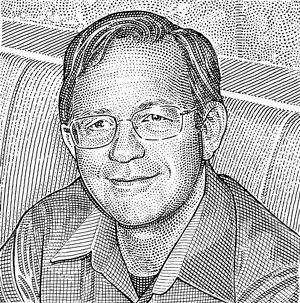Stephen DiZio ’72 Protects California’s Environment
By Robert Bruce Slater
A BIOLOGY MAJOR at Lafayette, Stephen DiZio ’72 began work for Wyeth Laboratories on drug-safety research and evaluation after completing a Ph.D. in genetics and developmental biology at the University of Delaware and conducting postdoctoral research at Temple University. “This was the type of career I had envisioned when I was an undergraduate,” he says.
 But a subsequent project set him on a path beyond the lab. At the University of California, San Francisco, and Lawrence Livermore National Laboratory, he evaluated the potential harm of chemicals released into the environment. Today, he watches over the environment for all of California. DiZio is chief of the Division of Human and Ecological Risk in the Department of Toxic Substances Control of the California Environmental Protection Agency.
But a subsequent project set him on a path beyond the lab. At the University of California, San Francisco, and Lawrence Livermore National Laboratory, he evaluated the potential harm of chemicals released into the environment. Today, he watches over the environment for all of California. DiZio is chief of the Division of Human and Ecological Risk in the Department of Toxic Substances Control of the California Environmental Protection Agency.
The department regulates hazardous wastes and their transport, cleans up contamination, and develops plans to reduce the amount of hazardous waste generated in California, currently two million tons per year. DiZio’s division assesses the toxicity risk of contaminants on people, animals, and the environment.
More than 800 substances have been designated hazardous under California law. DiZio believes air, soil, and water pollution are the most pressing environmental problems in the state. “More than 80,000 chemicals are used in commerce, and new ones are added every day. We know the safety of only a few hundred.” The situation reminds him of “a line spoken by the Red Queen in Lewis Carroll’s Through the Looking-Glass, ‘It takes all the running you can do to keep in the same place.’”
Based in Sacramento, DiZio supervises 33 environmental scientists in five offices around California. “On a typical day, I spend time discussing work with staff or senior managers, preparing for expert courtroom testimony, interviewing potential job candidates, or testifying before the California legislature,” he says. He also is a member of the Interstate Technology and Resource Council, a network of environmental officials in 48 states that exchanges information on ecological issues.
Contrary to conventional wisdom, DiZio says, “Most businesses and industry interests are cooperative, though some are resistant due to the financial costs of environmental compliance.” Many businesses work with DiZio from the start of development projects in order to avoid problems down the road.
Despite California’s budgetary problems, DiZio does not foresee any cutbacks in funds for environmental assessment. “We do not use tax revenues. We survive on fines and penalties, voluntary fees-for-services agreements, and grants from the federal EPA.”
The department also receives funding from the U.S. Department of Defense. In fact, one unit under DiZio is concerned solely with toxicology and risk assessment on current and former military installations in California. Each base may have several hundred individual toxic waste release sites, often with a complex mixture of toxic chemicals in soil and groundwater. This presents a multifaceted regulatory environment of concern to local, state, and federal authorities. California’s environmental laws and regulations are typically more stringent than federal guidelines and procedures.
“The real problems arise,” DiZio says, “when the military divisions are reluctant to adhere to California standards in fear of setting national precedents for environmental action on military bases in other states.”
Another unit in DiZio’s division deals with environmental risks at existing and proposed sites for public schools. This division conducts research and reports directly to the public with written reports and testimony at community meetings on any environmental issue of concern on a school property.
Of all aspects of his job, DiZio enjoys giving testimony in the courtroom or before the legislature best. “But at this point in my career,” he says, “mentoring new young scientists gives me the most satisfaction. They are the future, for all of us.”